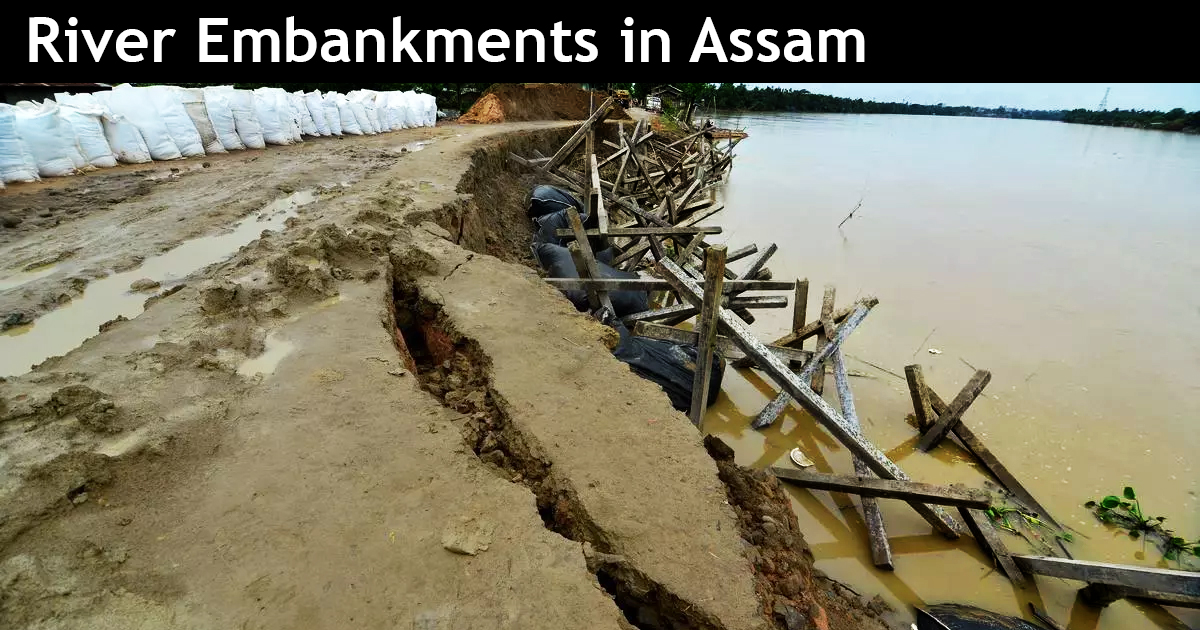Context (IE):
The construction of embankments in the Brahmaputra basin to manage changing flood patterns has led to disastrous consequences.
Historical Background:
- Initial Requests: Assam’s request for embankments dates back to 1950, inspired by American and Chinese dykes.
- Garg Committee: Established in 1951 and headed by G.R. Garg of the Central Waterways, Irrigation, and Navigation Commission, the committee warned against the construction due to potential ecological and hydrological risks.
Issues and Concerns:
- Alteration of Natural River Flow and Ecosystems: Embankments disrupt natural river flow, affecting aquatic life (e.g., Golden mahseer and various catfish species’ breeding) and biodiversity (e.g., habitat destruction and displacement of the one-horned rhino).
- Siltation: The accumulation of sediment reduces river depth and hinders navigation.
- Social Displacement: Causes social displacement and restricts community access to rivers.
- Changed River-Land Connections: Initially protected crops and properties but has fundamentally altered river-land connections.
- Continuous Reinforcement: Requires ongoing reinforcement due to changing river dynamics and climate.
- Exacerbation and Breach Risks: The National Flood Commission is concerned about exacerbation and breach risks.
Alternatives:
- Floodplain Restoration: Removing levees to restore floodplains and reduce downstream flood heights.
- Natural Water Retention: Afforestation, wetland restoration, and retention ponds to regulate river flows.
- Realignment: Gradually moving flood defenses inland and controlled flooding of low-lying areas.
- Raised Buildings and Floating Structures: Construct buildings on stilts or use floating structures in flood-prone areas.
- Green Infrastructure: Integrating green roofs, permeable pavements, and rain gardens to absorb rainwater.
- Channel Widening and Deepening: Enlarging river channels to increase floodwater capacity.
- Dredging and Desilting: Removing sediment from river channels and reservoirs to improve water flow.
Way Forward:
- Ecologically Sustainable Solutions: Implement projects similar to the Netherlands’ Room for the River initiative, which focuses on floodplain expansion.
- Integrated Sediment Management: Adopt strategies like the US’s Missouri River restoration project.
- Community-Centric Approaches: Emulate projects such as Kenya’s Tana River Delta Conservation Project.
- Adaptive Management Practices: Implement practices that adapt to changing river and climate conditions, as seen in Australia’s Murray-Darling Basin Plan.





